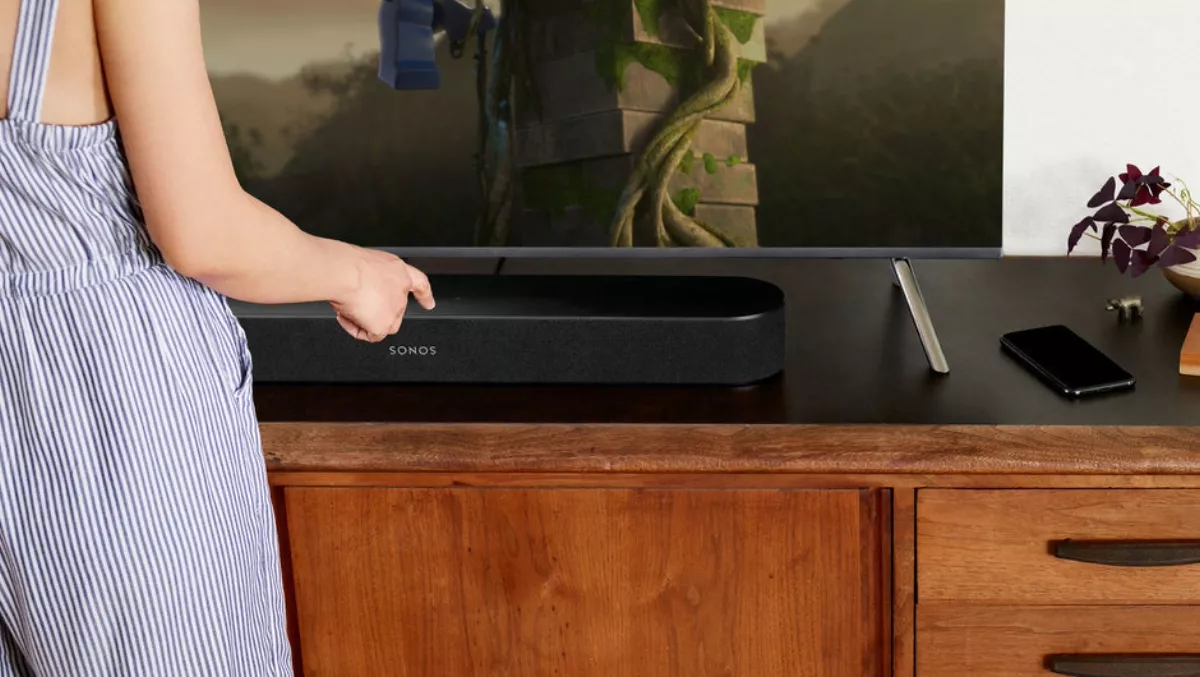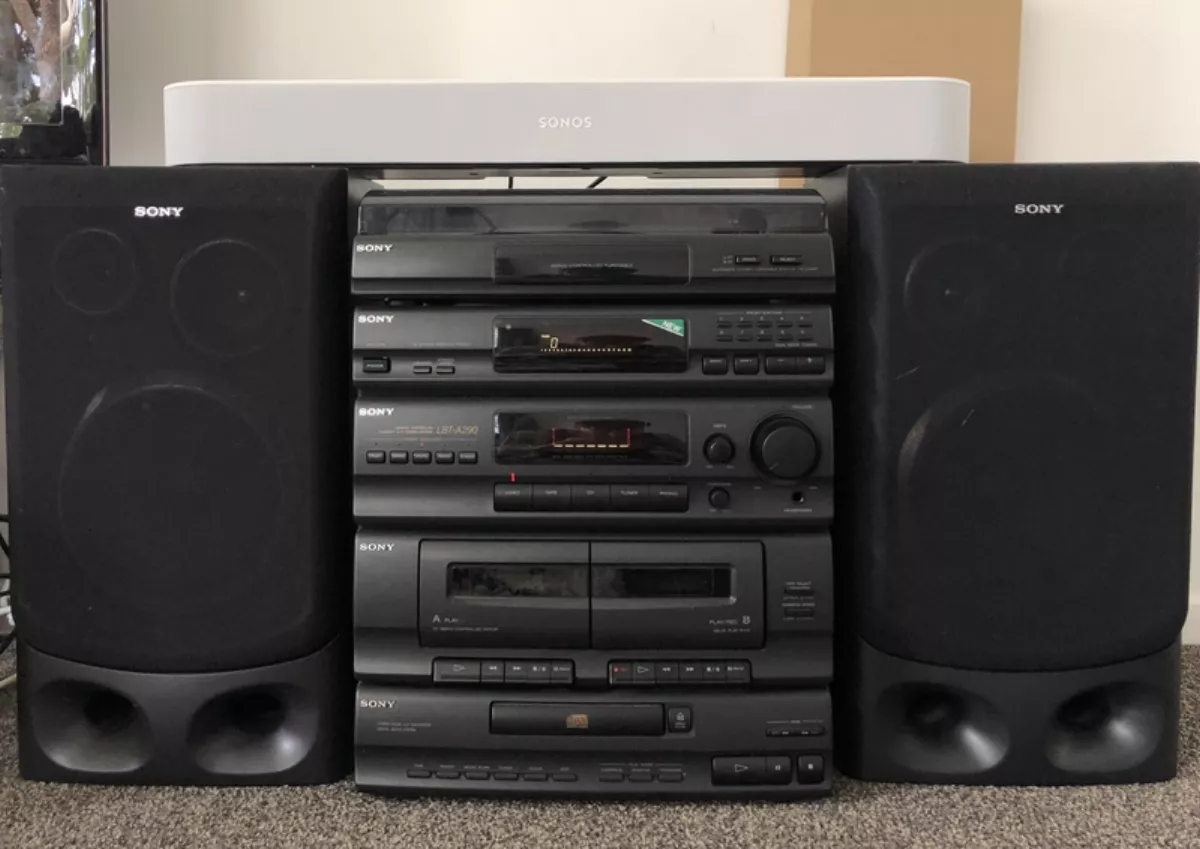
Review: The Sonos Beam - more than a soundbar
My time with the Sonos Beam was something of a journey of discovery.
That may sound melodramatic because it definitely is, but we have to keep it interesting.
And the heart of it is true - with the Beam, I explored each feature slowly and found something interesting at each turn. So, take my hand as I lead you along the path I walked with this soundbar-cum-smart speaker.
The sound
The first time I tried the Beam I hooked it up in the office on a Friday for a little afternoon accompaniment.
I wasn't super impressed, but the sound was clean-ish and my colleagues all got a good laugh out of watching me walk around, slow-motion fanning the room with my phone to calibrate the sound using Sonos' TruePlay Speaker Tuning software.
According to the Sonos website, this "uses your Sonos app and the microphone on your iPhone or iPad to measure how sound reflects off walls, furniture and other surfaces in a room. Then it makes some precise acoustic adjustments to your speaker - sometimes large, sometimes small - to make sure you always hear the purest sound possible.
Wikipedia describes a pure tone as one that "has the property - unique among real-valued wave shapes - that its wave shape is unchanged by linear time-invariant systems," so that's… good?
Anyway, you look goofy as heck making it work so I'm going to trust the engineers on this one.
But it wasn't until I took the Beam home that suddenly the sound came together - I'm putting this down to noise interference in the office building - but it still wasn't quite what the price-tag and Sonos' reputation seemed to promise.
The next day, my journey moved forward when I fiddled with the settings and discovered a whole range of sound that had been completely missing - bass.
Once I cranked the low-end up to max suddenly everything sounded much, much better.
Now, I'm not a huge bass junkie so with this setting change it reached good enough - anyone who likes their earth a little more shaken will probably have to invest in the Sonos Subwoofer, which is almost twice the price of the Beam alone.
The app
The Sonos app UI somehow doesn't reflect the same sleek intuitiveness that the device itself carries.
I found the setup of the device and trying to synch it with apps like Spotify to be a little clunky and awkward.
In saying that, the range of things that it can do is already pretty impressive, and as more companies partner with Sonos to integrate with its platform, I don't doubt that will continue to grow.
It was definitely usable and, thanks to software-defined platforms, will no doubt be improved on over time as the dev team refines their work.
It says something that my flatmate also downloaded the app and the Beam quickly became our audio player of choice.
What was revolutionary for me was that within a week of it sitting on top of my circa-1990s Sony Sound System,-
 Progress
Progress
- they updated the firmware to allow the Beam to also work with Apple AirPlay.
This new moment of discovery along my journey meant I no longer had to navigate through the Sonos app to play music on Spotify - a relief - and that I could now play my beloved podcasts on the player of my choice (Overcast for those inclined).
It would've been great to have had a couple more Sonos speakers set up through the house so that I could try out the various ways of playing different things in separate rooms, but I didn't.
All I can report is that it at least looks like it would be a great option for a family looking for a cohesive, wireless solution to total home audio.
The TV
The next leg of my journey occurred after about a week of using the Beam as a music player.
The Sonos Beam is marketed as a soundbar for a TV but only connects with HDMI ARC or optical, neither of which the TV in the lounge had.
Eventually, I switched that TV for one with an optical input and got it working - and I liked it very much.
While the sound continued to be pretty top-notch, the fact that I could control the volume with the TV's remote was very nice. It meant not having to worry about finding the right balance between TV volume and speaker volume and needing to adjust it all the time.
However, just to really nitpick, there were times when dialogue got a little lost under soundtrack or foley - I suspect the solution would be turning the low-end back down on the Beam but, as I play music on it just as much as I watch TV, that's not my ideal.
Alexa
The final step in my Sonos sojourn was when I finally got around to setting up Amazon's answer to Siri, Alexa.
I'd heard a lot of buzz around how Alexa's natural language processing (NLP - the ability to infer understanding without specific word use) is so much better than Siri's and can say that it is all absolutely true.
I am a big user of Siri on my iPhone and am usually pretty happy with how well it interprets what I say, although there are plenty of moments of frustration.
With Alexa, my flatmate and I spent at least an hour demanding and commanding increasingly stupid things and it was stunningly good at switching between our voices and obeying esoteric commands.
There did seem to be some stuff that Alexa could supposedly do, but couldn't in New Zealand. Sadly par for the course at this point.
Its integration with Spotify (which is very absent from Siri) meant that I could yell at Alexa from the kitchen to shuffle a playlist or artist and it would happily oblige.
At the end of the day…
The Beam is a pretty reasonable price for a soundbar, retailing at NZ$699 (AU$599), especially considering the sound quality, array of features, and modular wireless connectivity with other Sonos products.
Before I had the chance to use and play with the Beam, I couldn't imagine taking anyone seriously if they suggested spending that kind of money on a soundbar - but it has actually slotted surprisingly well into my world.
I would happily suggest it to anyone who was looking for a smart speaker but wanted to spend a little more for versatility, improving their media watching experience, great sound quality, and the potential to outfit the house with a cohesive system.


